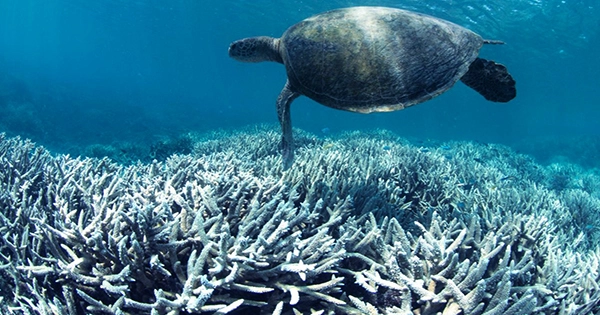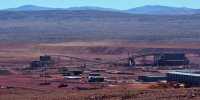Officially, the world’s biggest coral reef system is experiencing a “severe” bleaching event, but many marine experts believe the truth is considerably worse; the sixth major bleaching event is now occurring. In recent years, bleaching episodes have become more prevalent, and this is far from the largest. The fact that it occurs during a La Nia year, however, makes it much more concerning than larger occurrences that occur when the ENSO cycle makes them more likely. The symbiotic link between corals and the zooxanthellae microalgae that gives them their color, sugars, and amino acids is the foundation of coral reefs, which support 25% of marine organisms.
When corals are agitated, they shed their zooxanthellae and turn white (bleached), putting them in a race against the clock. The coral will perish if circumstances do not change within a few weeks to allow them to take in fresh microalgae. Many variables can stress a reef, but high water temperatures are frequently associated when bleaching occurs over vast regions. These bleaching occurrences are then used to gauge the reef’s health. The Great Barrier Reef Marine Park Authority (GBRMPA) undertakes frequent aircraft surveys over the reef’s immense length, seeking widespread bleaching episodes that reflect large-scale stressors rather than local impacts.
The GBRMPA confirmed today that “widespread” bleaching had occurred in the reef’s north and center parts. Large-scale coral death does not always result from bleaching episodes, and whether it does or not depends on how rapidly temperatures recover to normal after heatwaves. “The last week has brought lower temperatures to the Reef,” according to the GBRMPA.
“Despite this, sea surface temperatures remain above normal over most of the Marine Park and are predicted to remain so until the end of March,” the announcement says. As a result, the risk remains considerable. The GBRMPA hasn’t defined what they’re observing as a “major bleaching event,” and there’s no consensus on when bleaching gets widespread enough to earn the name. However, before the release, Professor Terry Hughes of James Cook University, who performed the surveys before the GBRMPA took over, tweeted:
Whether or whether this event results in catastrophic coral death, the fact that it is a possibility this year shows how serious the reef’s threat is on a decadal scale. The first major bleaching occurrences in the GBR were documented in 1998, followed by others in 2002, 2016, 2017, and 2020, several of which coincided with extensive bleaching in other regions of the planet. In 2008 and 2011, floods wreaked havoc on inshore reefs while leaving more distant coral unscathed.
The more widespread episodes, on the other hand, were linked to the El Nio years, when the western Pacific is unusually warm and bright. The fact that catastrophic bleaching occurred in a year when Queensland south of the reef was ravaged by unprecedented floods shows that no year is safe. Since 2017, the Australian government has fought UN scientists’ efforts to get the reef included in a list of World Heritage “in danger” sites, partly owing to its refusal to embrace climate change and partly due to the reef’s tourism value. UNESCO representatives will visit the reef starting Monday to assess if the government’s assertions about its health are true. Their findings will be presented at a meeting of the World Heritage Committee in June of this year.
The Great Barrier Reef is so massive, with 2,900 distinct reefs scattered over 2,300 kilometers (1,400 miles), that there are constantly trend-defying regions. One isolated reef in the GBR’s southern end was discovered to be thriving in 2019, but the vast majority of reefs are declining, their resistance wearing thin as the gaps between destructive events become too small to enable recovery. The key tourism reefs surrounding Cairns and Port Douglas have only been mildly damaged this year, according to the GBRMPA, which will undoubtedly provide politicians and fossil fuel proponents more opportunity to ignore the threat. The most severely devastated reefs, however, are off the coast of Townsville, right on the Authority’s doorstep, making it difficult for them to ignore.















